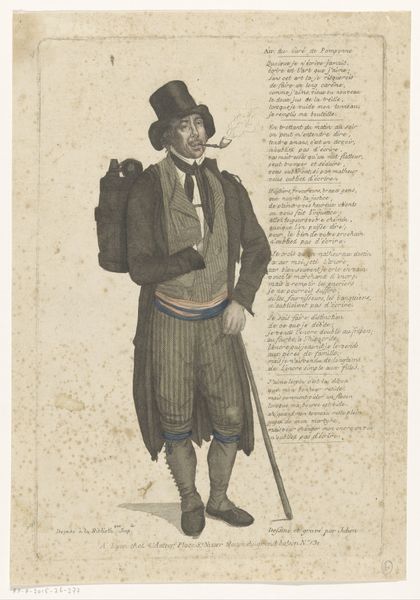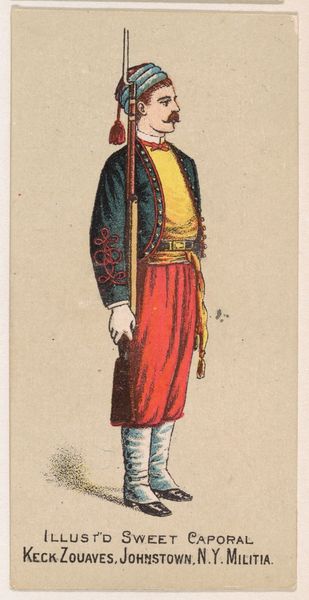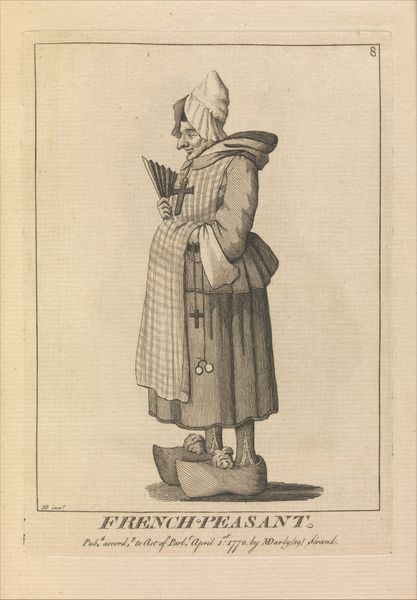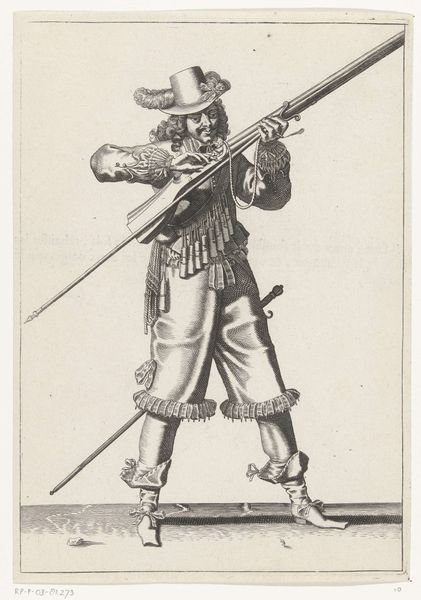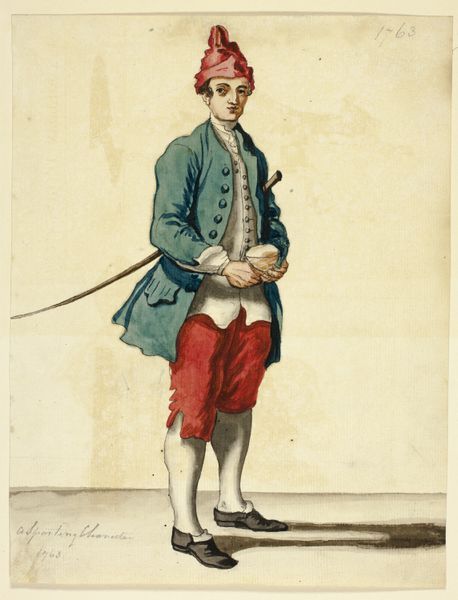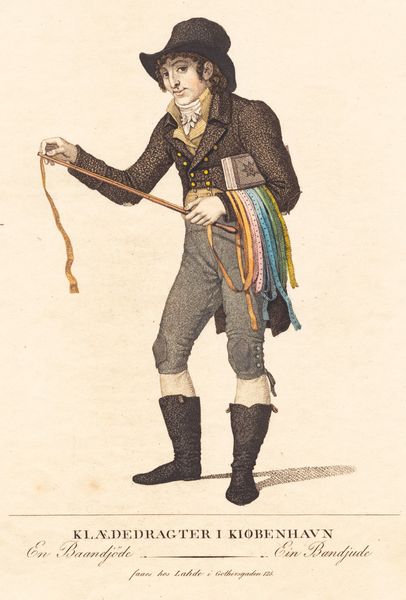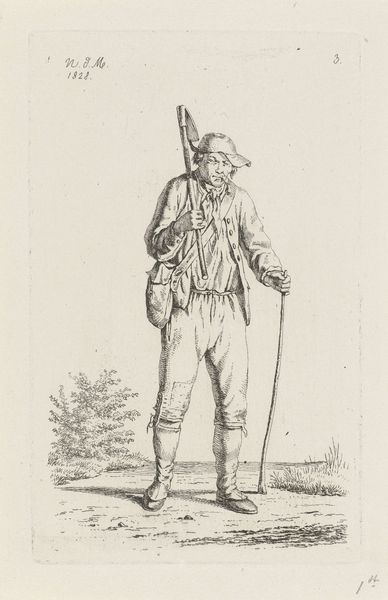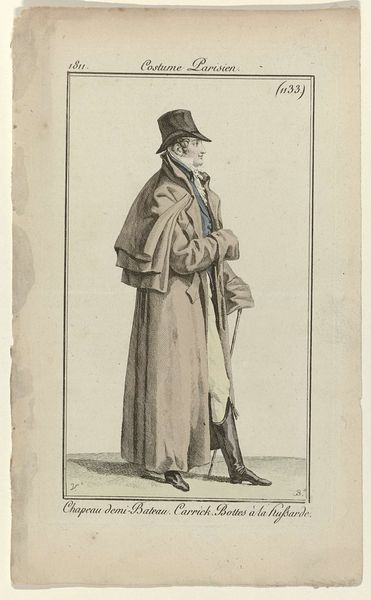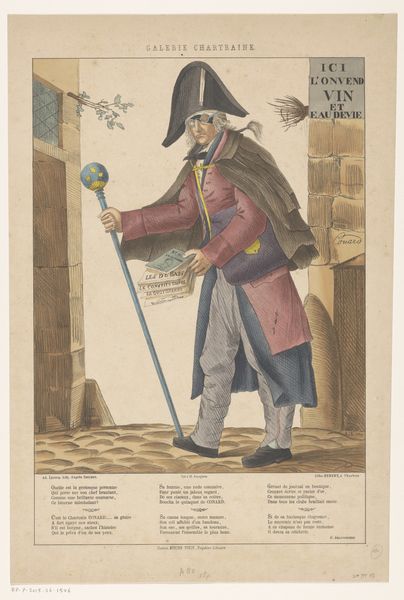
print, etching, engraving
# print
#
etching
#
charcoal drawing
#
genre-painting
#
engraving
#
watercolor
Dimensions: 253 mm (height) x 350 mm (width) (bladmaal)
Curator: Here we have a print titled “H. C. G. Proft," dating from sometime between 1796 and 1834, currently held at the SMK, Statens Museum for Kunst. Editor: The first thing I notice is the attire – particularly the almost cartoonishly large top hat and oversized coat. It speaks to a certain performance of class, maybe even a self-aware one. What's it made of? Curator: The work appears to be a combination of etching and engraving. Thinking about this period and this kind of depiction, the materials used signal not just class, but likely also education, perhaps an engagement with Enlightenment ideals through its subjects. We have to ask who is the viewer in this construction and from what subject position? Editor: I'm drawn to that very precise detail achieved through the etching. Consider the labour involved: the deliberate mark-making required to create such intricate lines in his coat or the pattern of cobblestones beneath his boots. Each cut becomes an intentional action and a kind of slow media to achieve the look of someone from high class. Curator: And it begs the question of what this constructed view actually hides. Looking through a contemporary lens, how does the representation of class operate and who gets left out? What’s unspoken about this subject that we aren't seeing in the materials of its making? Editor: I think about the accessibility of printmaking at this time. It wasn't simply about representing status, but also about a means of wider dissemination, the labor put into reproducing images, and the emerging marketplace for art. It served to shape social norms as much as to reflect it. Curator: Exactly, so the image participates in solidifying societal roles. Considering this through feminist theory for example, it perpetuates particular gender roles alongside its representation of class. Editor: To move toward the print shop floor I agree, examining who printed, who designed, and how these images shaped understandings of class becomes important in seeing both the labor and gender division in artistic practice, which is what’s needed for complete art evaluation in art history and collecting. Curator: Thank you for speaking the unacknowledged. Understanding not just the historical image but who benefits, profits from, and participates is critical. Editor: Yes, thank you, this lens reveals both the making and the maker in different ways.
Comments
No comments
Be the first to comment and join the conversation on the ultimate creative platform.

